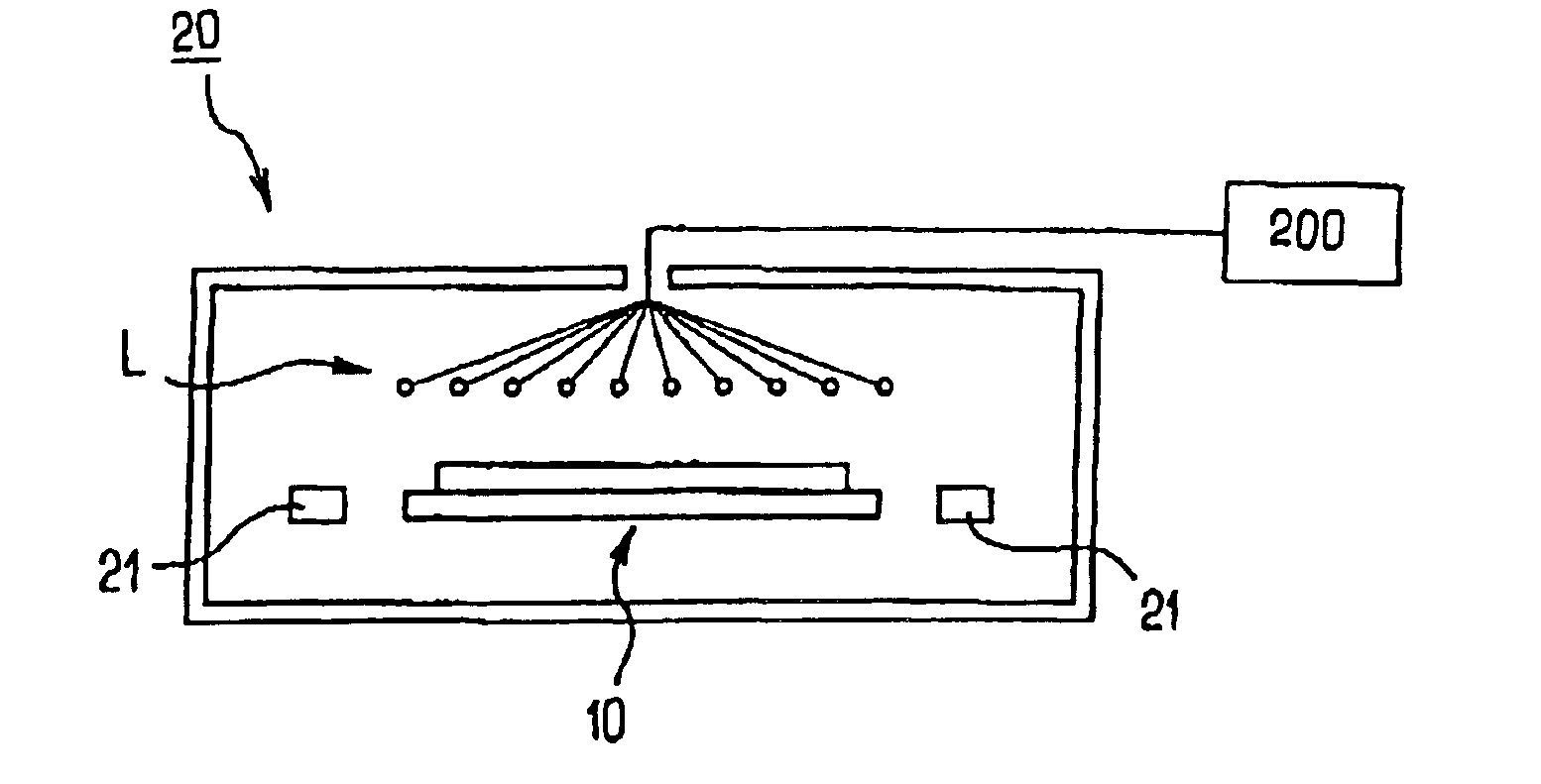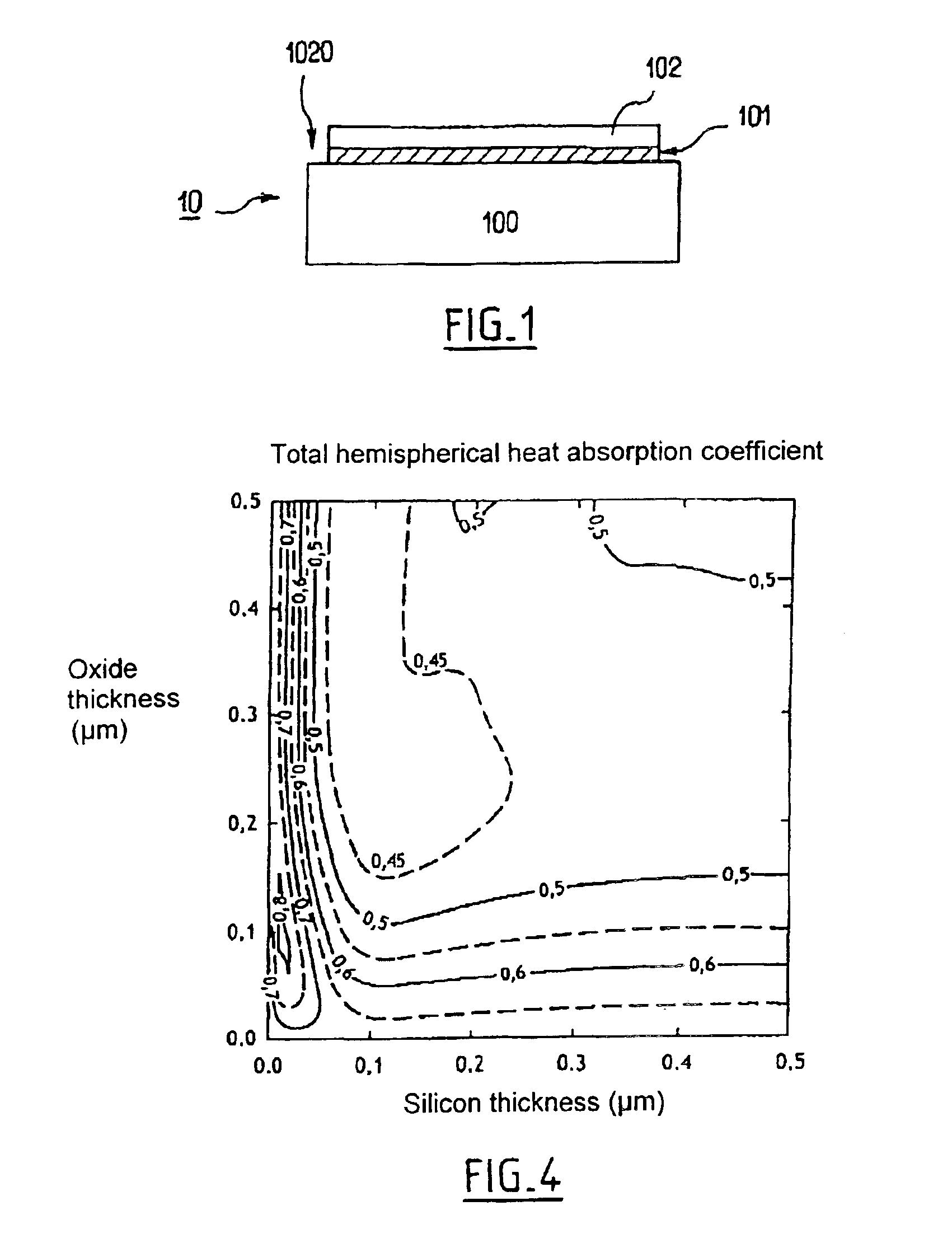Heat treatment for edges of multilayer semiconductor wafers
a multi-layer semiconductor and heat treatment technology, applied in lighting and heating apparatus, furnaces, muffle furnaces, etc., can solve the problems of oxidizing the surface of the wafer, and annealing operations performed with drawbacks
- Summary
- Abstract
- Description
- Claims
- Application Information
AI Technical Summary
Benefits of technology
Problems solved by technology
Method used
Image
Examples
Embodiment Construction
With reference initially to FIG. 2, an annealing installation 20 is shown for performing annealing process on a wafer 10 that includes an edge. This installation is suitable for performing RTP type annealing, which may be annealing for smoothing purposes. This type of installation has been selected to illustrate the invention since the drawbacks generated by such annealing (slip lines, and other drawbacks) are particularly severe.
A particularly advantageous application of the invention thus concerns that use of RTP type annealing, such as RTO annealing, or RTA type finishing annealing for smoothing the surface of the wafer. Nevertheless, the present invention is not limited to this type of annealing, but applies to all of the modes of annealing.
The installation 20 can thus be used to perform high-temperature annealing which is not RTP mode annealing, and could be used for low-temperature annealing. In addition, in RTP type annealing (which this installation is also suitable for perf...
PUM
| Property | Measurement | Unit |
|---|---|---|
| temperatures | aaaaa | aaaaa |
| ” temperatures | aaaaa | aaaaa |
| temperature | aaaaa | aaaaa |
Abstract
Description
Claims
Application Information
 Login to View More
Login to View More - R&D
- Intellectual Property
- Life Sciences
- Materials
- Tech Scout
- Unparalleled Data Quality
- Higher Quality Content
- 60% Fewer Hallucinations
Browse by: Latest US Patents, China's latest patents, Technical Efficacy Thesaurus, Application Domain, Technology Topic, Popular Technical Reports.
© 2025 PatSnap. All rights reserved.Legal|Privacy policy|Modern Slavery Act Transparency Statement|Sitemap|About US| Contact US: help@patsnap.com



